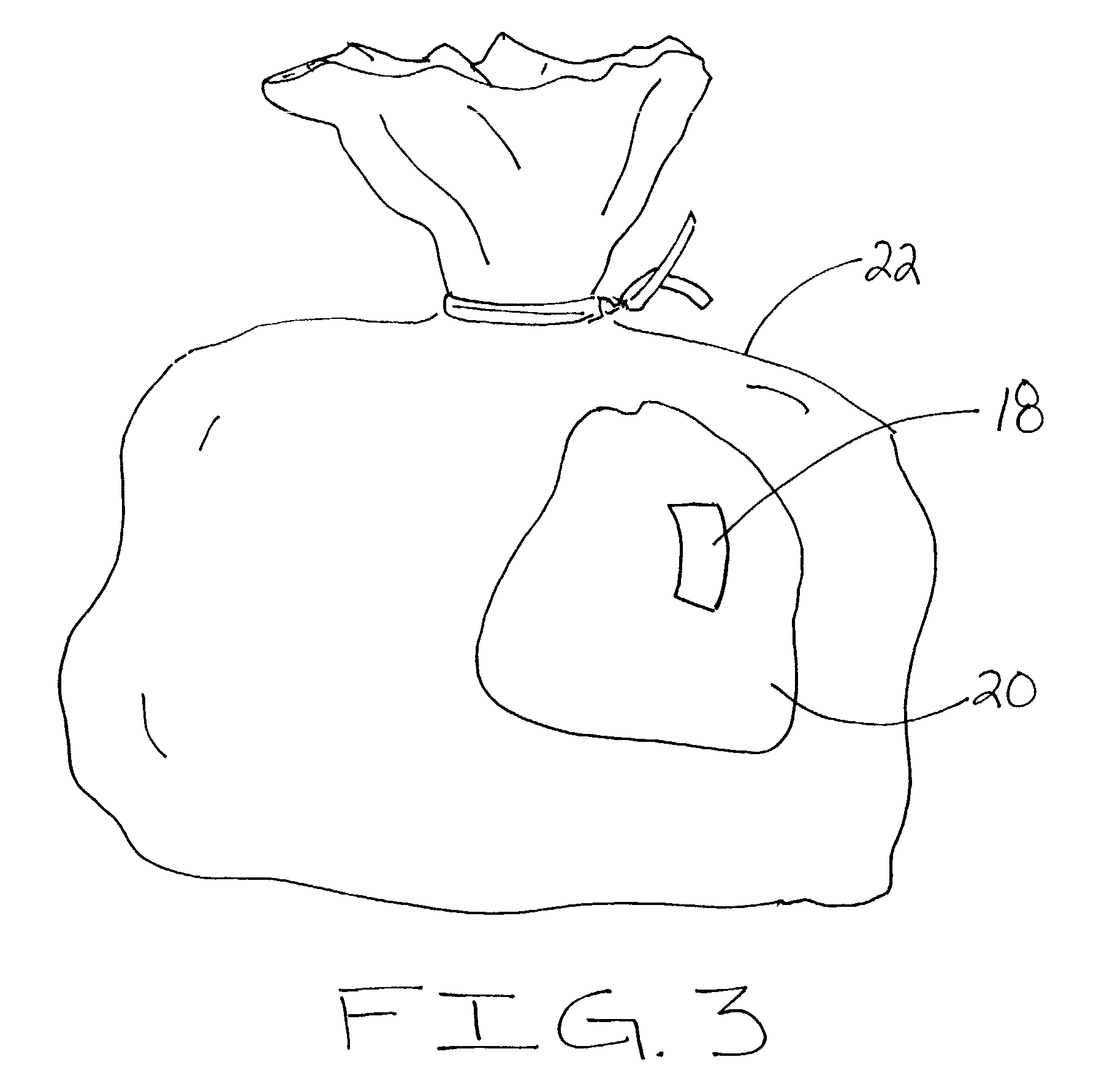Microbial and odor control using amorphous calcium silicate impregnated with sodium chlorite
a technology of amorphous calcium silicate and sodium chlorite, which is applied in the field of odor control using amorphous calcium silicate impregnated with sodium chlorite, can solve the problems of high cost, extreme wetness, and significant human genetic or carcinogenic hazards, and achieve excellent deodorizing properties, prolonging time-range, and high liquid content
- Summary
- Abstract
- Description
- Claims
- Application Information
AI Technical Summary
Benefits of technology
Problems solved by technology
Method used
Image
Examples
example 2
[0051] The composition in this experiment contained 100 grams of dehydrated magnesium silicate, 12 grams of sodium chlorite and 20 grams of citric acid. Sodium chlorite and citric acid were mixed individually with magnesium silicate prior to mixing them together. 11 Grams of this composition was introduced in the a PET gallon jar. The conditions and the measurement techniques were the same as described in Example 1. The release profile is reported in Table 2. Unlike the release profile of chlorine dioxide with calcium silicate, chlorine dioxide production started within the first eight hours of the exposure to humidity.
2 TABLE 2 Hours ppm of ClO.sub.2 0 0 8 0.4 16 0.6 24 1.2 32 2 40 2.1 48 1.9 56 2.1 64 2.4 72 3.0 80 3.1 88 2.9 96 2.8 104 2.9
example 3
[0052] This experiment focused on the odor abatement properties of chlorine dioxide that is released from chlorite-impregnated amorphous silicates when exposed to moisture. The four odor-causing compounds that were tested are thiophene, 2-mercaptoethanol , trimethylamine and isovaleric acid. These compounds were purchased from the Aldrich Chemical Company of St. Louis, Mo. Thiophene and 2-mercaptoethanol form the basis for rotten, sulfureous odors, such as the odors exhibited by rotten eggs or human waste. Trimethylamine forms the basis of rotten seafood odors and isovelaric acid forms the basis of rancid dairy products.
[0053] Two sets of four pieces of 2in..times.2in. filter paper were soaked with 10 .mu.l of four different odor causing compounds and dried for 2 minutes. The filter paper was placed in eight 13-gallon garbage cans such that the first set of four cans, each with a different compound, was used as a control. An amount of the powdered composition from Example 1 was intr...
example 4
[0055] In the following examples 4 through 8, the amorphous silicate used was expanded amorphous aluminum silicate (EAAS). It was obtained from two different sources: 1) Paradigm International, Inc., Calif. and 2) Aldrich Chemical Company, Milwaukee, Wis. These materials are subsequently P1 and P2, respectively. The density of P2 is much higher than that of P1.
[0056] In this experiment 230 milliliters of 0.6M hydrochloric acid was sprayed on each of the 230 g of P1 and P2. These substances were sprayed with a generic spray bottle, with thorough stirring between every few sprays. The acidified amorphous silicate was allowed to bake at 250.degree. C. for one hour. The amorphous silicate turned slightly brown in color, which was possibly due to oxidation of Fe.sup.2 + to Fe.sup.3 +.
[0057] The amorphous silicate product was packaged and used in a 50 cc wide-mouth bottle made of high density polyethylene (HDPE). The cap on the bottle had a push-pull mechanism for sealing or allowing the ...
PUM
 Login to View More
Login to View More Abstract
Description
Claims
Application Information
 Login to View More
Login to View More - R&D
- Intellectual Property
- Life Sciences
- Materials
- Tech Scout
- Unparalleled Data Quality
- Higher Quality Content
- 60% Fewer Hallucinations
Browse by: Latest US Patents, China's latest patents, Technical Efficacy Thesaurus, Application Domain, Technology Topic, Popular Technical Reports.
© 2025 PatSnap. All rights reserved.Legal|Privacy policy|Modern Slavery Act Transparency Statement|Sitemap|About US| Contact US: help@patsnap.com


